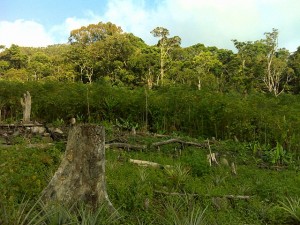
By Amy Cruz for Agroforestry World Blog
Scientists are analysing the transition from swidden agriculture to other land uses and how this affects farmers’ livelihoods and services provided by ecosystems
A recently published systematic review protocol offers a methodological approach to clarifying the evidence on the range of possible livelihoods and ecosystem services from swidden agriculture. The study is a collaboration led by the University of Melbourne with the World Agroforestry Centre Philippines and a number of other Australian universities, supported by the Evidence Based Forestry program of the Center for International Forestry Research and the CGIAR Research Program on Forests, Trees and Agroforestry.
‘Swidden agriculture’ or shifting cultivation has been practised in the uplands of Southeast Asia for centuries and is estimated to support up to 500 million people, most of whom are poor and rely on natural resources to meet their daily needs. It is considered by some as one of the earliest examples of traditional ‘agroforestry’. Trees and brush are selectively cut and later burned to return essential nutrients from the vegetation to the soil. In longer fallow systems, crops are planted for one or two years before abandoning the site and moving to another, leaving the land fallow for 10–25 years. The long fallow results in secondary forest ‘supermarkets’ wherein locals use non-timber forest products, timber and various cultigens, creating productive and diverse multifunctional landscapes.
Read full blog at World Agroforestry Centre











